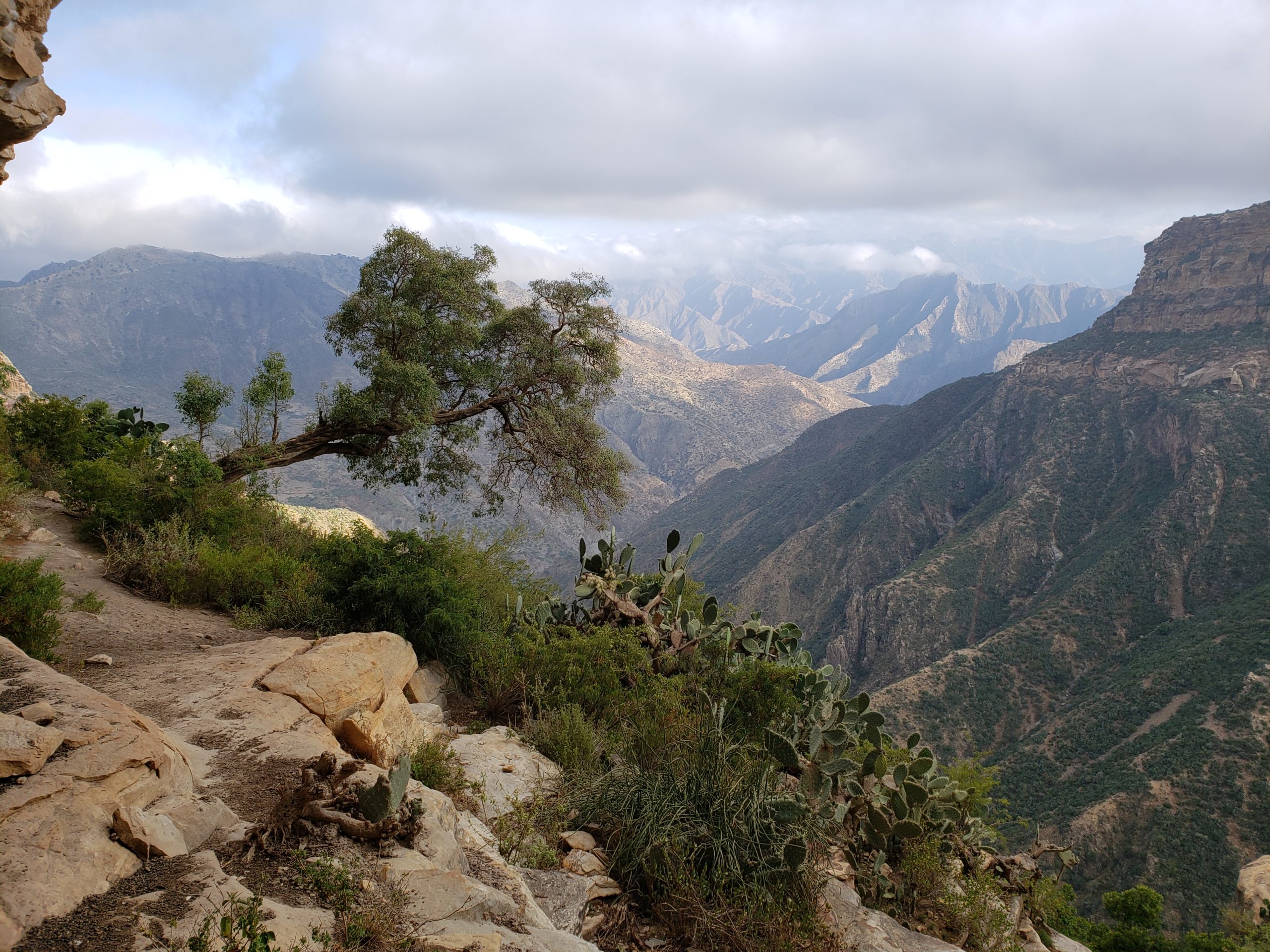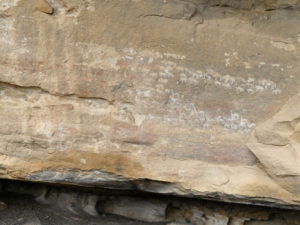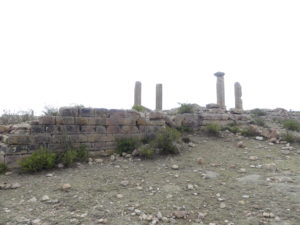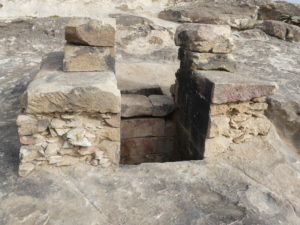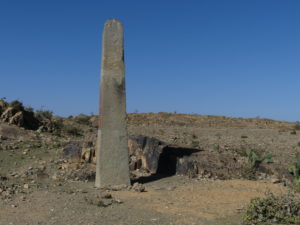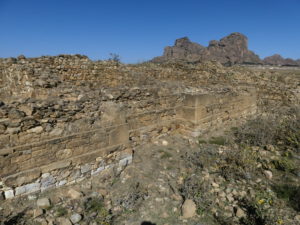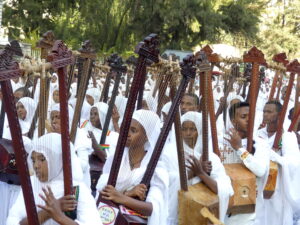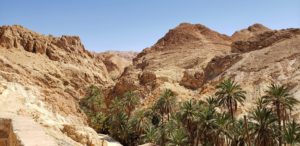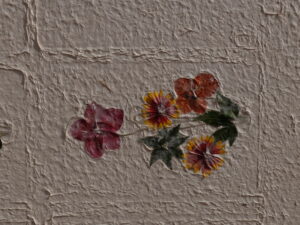In southern Eritrea, toward the still disputed border with Ethiopia, lies the domain of the ancient Axumite empire, which dominated the whole region roughly during the first millennium AD. This eventually became first Abyssinia and then the Ethiopian empire until foreign powers began to carve up the region into other pieces.
The remains of the Axumite period are sparse in Eritrea and, worse, barely documented or explored. The War of Independence and little funding internationally have kept fallow any potential discoveries. Similarly rock art sites in pre-historic shelters, naturally carved out of sandstone cliffs and used as hidden shelters by early tribes, are challenging to reach.
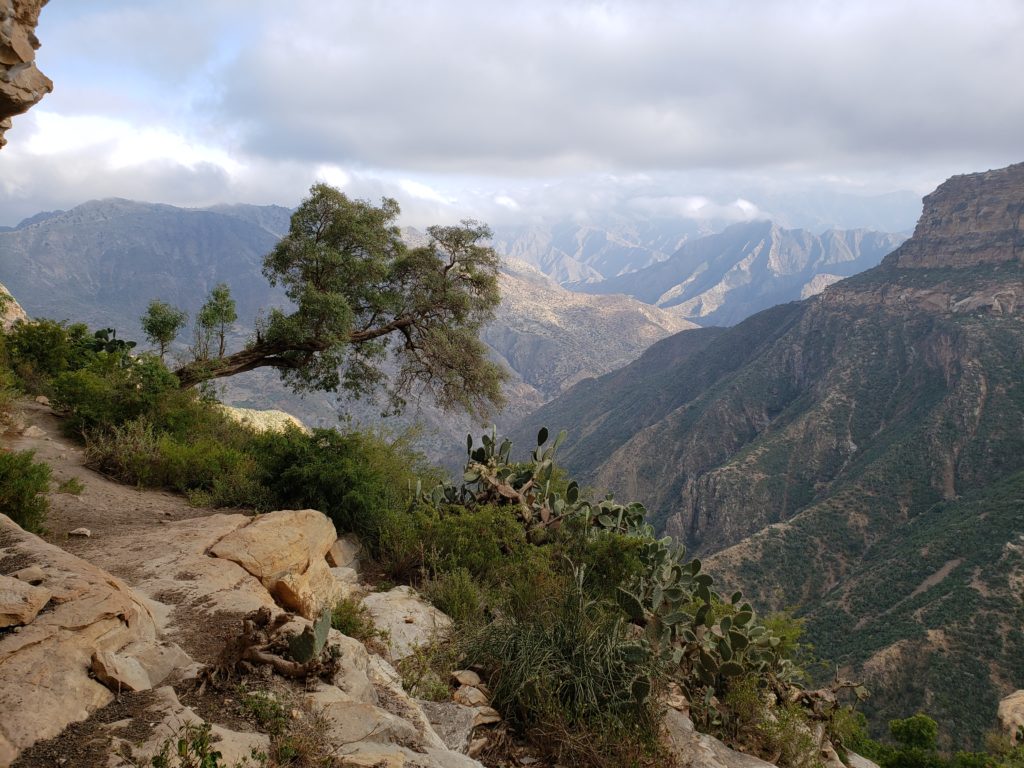
Yet, with the help of local caretakers for these sites near Qohaito and Senafe, we found some intriguing and often mystifying remnants in good condition, ready to be explored further across the south’s incomparably beautiful landscape of canyons and mountains.
Rock art
It seemed that everywhere we turned, as you see in the photo above, we found another colorfully striated canyon at the edge of serrated mountain peaks. Dozens of rock art sites in the area have been discovered around here, but their history is yet little known.
At this site, we found well preserved rock art from thousands of years ago. The tribe chose the location well, a natural sandstone shelter hidden from casual view a twenty minute descent down a cliff face.
The menagerie here included an array of animals painted on the sandstone surface of the natural shelter with antelope, lion and camel – as well as the people hunting or tending them.
Qohaito
Only some columns and platform of a temple remain at Qohaito, likely from the early Axumite period some 1500 years ago. What’s left of the cut stones at its base shows craftsmanlike masonry work.
Near a grand, mist-filled canyon, these steps led down to a now dank tomb chamber from which Ethiopian archeologists removed a host of mummies and brought them to Addis Ababa. Early on, they were considered Egyptian mummies but the truth awaits further exploration.
Senafe
This plinth oversees the Senafe archeological site. It bears Egyptian imagery of sun and moon on top and a surprisingly vivid inscription in a predecessor language to G’hiz, the priestly language of the Coptic Christians. It’s in good shape, though patched back together after an explosion during the War of Independence knocked the top off.
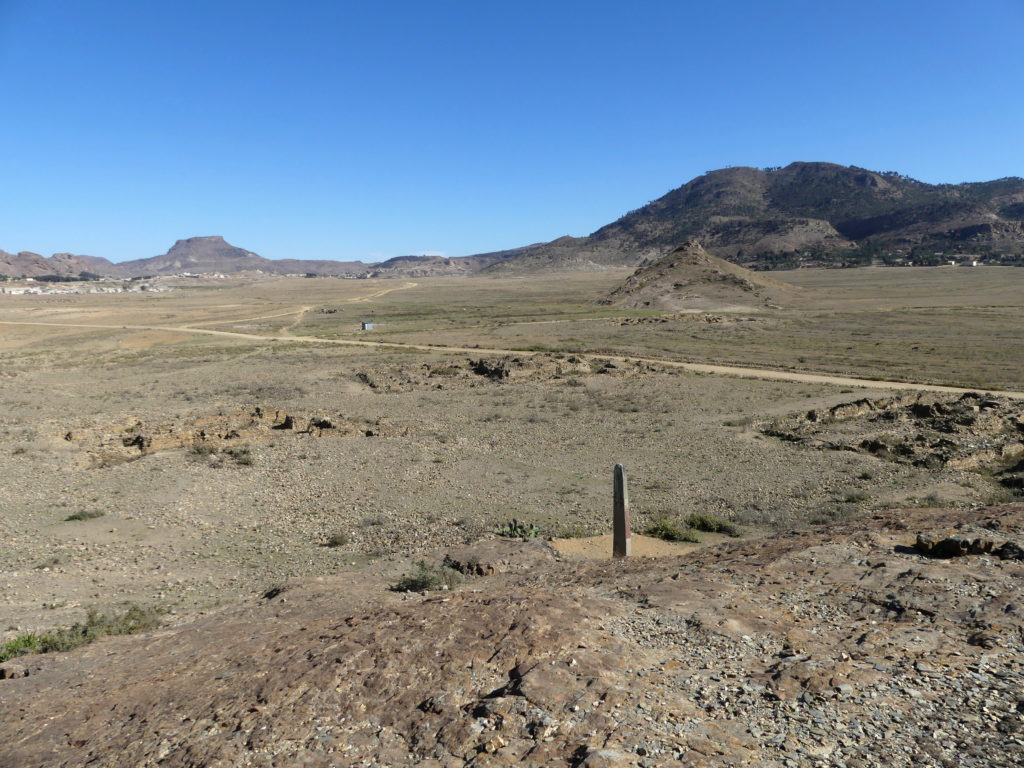
Around the plinth, we explored one of the many vestiges of old structures apparently along the Axumite trading routes. From a temple site atop a crystallized basalt hill, we could see the lower walls of five multi-chambered structures clustered nearby. Many more dot the area. How they were used remains unclear.
The Senafe structures impressed us with their very sophisticated wall-building techniques, with large cornerstones, fitted leveling stones at the corners anchoring slightly set-back tiers, and carefully fitted rough stone work along the walls.
In the backdrop of the photo is the oddly shaped mountain above Senafe itself; a Coptic monastery is tucked into its saddle.
An older Coptic church nestles below the mountain in the town of Senafe beside a modern church. This simple rectangular building, with a dark chambered interior, has served as a place of worship since the 12th or 13th century.
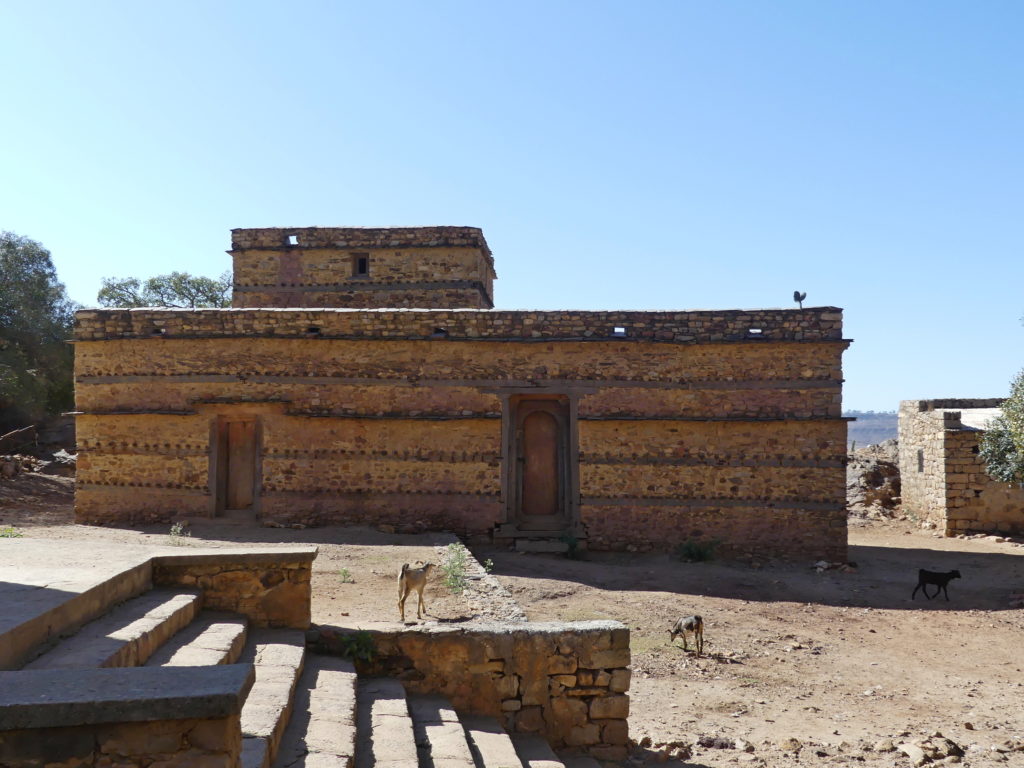
(To enlarge any picture above, click on it. Also, for more pictures from Eritrea, CLICK HERE to view the slideshow at the end of the itinerary page.)


